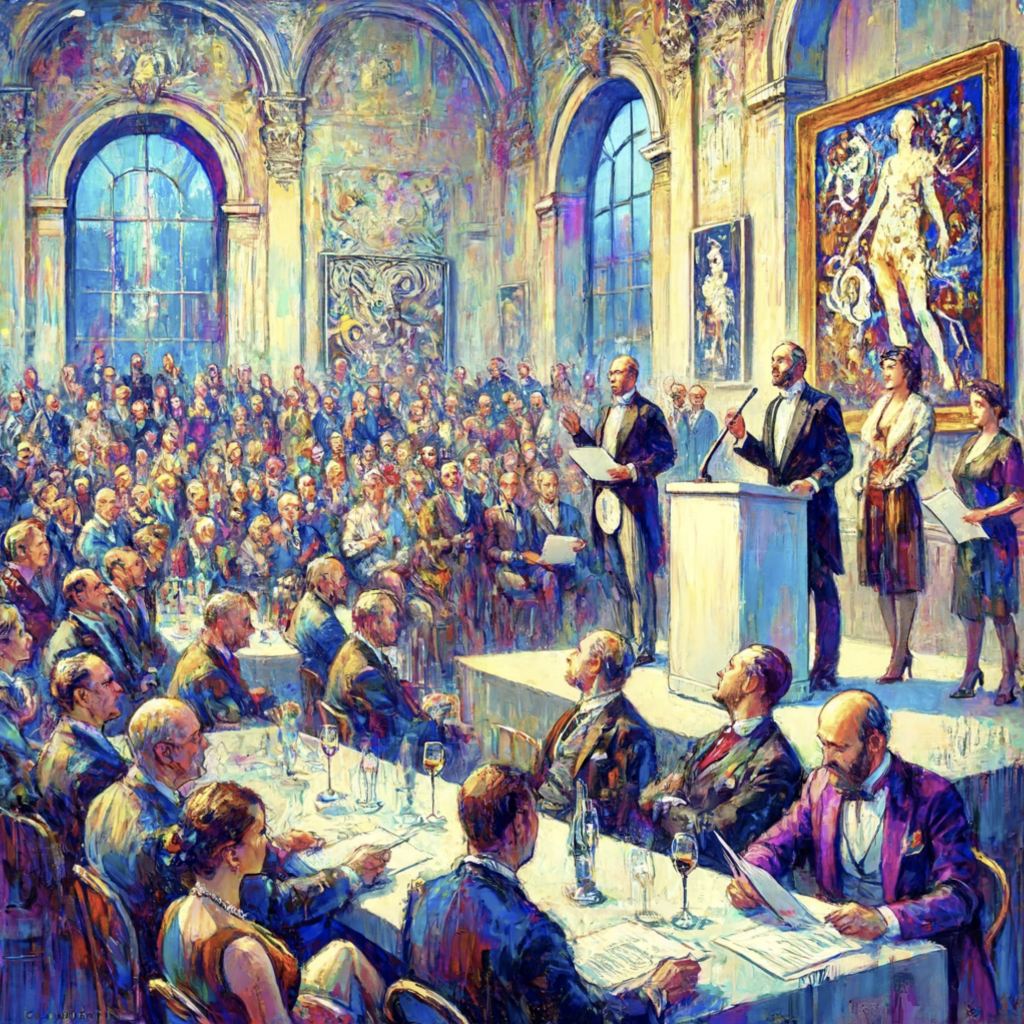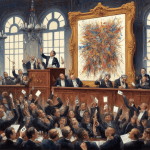
Is the art market just a playground for the self-proclaimed elite? This question has been on the minds of many art enthusiasts and critics alike. The glittering world of high-profile auctions and million-dollar paintings might seem distant and mysterious to the average person. But beneath the surface, there are whispers of manipulation and control by a select few, raising questions about the true dynamics at play in the art world.
The Evolution of the Art Market
The art market has a rich history that dates back centuries, evolving from the patronage systems of the Renaissance to the bustling global network we see today. Initially, artists relied on wealthy patrons to fund their work, often creating masterpieces that would adorn the palaces and churches of Europe. Over time, this system gave way to more commercial transactions, with galleries and art dealers playing pivotal roles. Today, the market is a complex web of transactions involving artists, collectors, galleries, and auction houses, each playing a crucial part in the ecosystem.
Key players in the art market include the artists themselves, whose works are the foundation of the industry. Collectors, ranging from private individuals to major institutions, purchase these works, often seeing them as both aesthetic treasures and financial investments. Galleries and dealers act as intermediaries, promoting artists and facilitating sales. Auction houses like Sotheby’s and Christie’s command significant influence, setting price benchmarks and driving market trends through their high-profile sales.
The mechanisms of the art market are intricate and multifaceted. Prices can be influenced by factors such as the artist’s reputation, the historical significance of the piece, and current market trends. Auctions, in particular, play a critical role, with bidding wars often driving prices to astronomical levels. However, the true value of art is often subjective, hinging on personal taste and market dynamics, making it a fertile ground for potential manipulation.
Who Are the Globalists?
When we talk about “globalists” in the context of the art market, we refer to wealthy elites, multinational corporations, and influential families who wield significant power and resources. These individuals and entities can exert considerable influence over various aspects of the market, from setting trends to controlling prices. Historically, the art world has seen its fair share of powerful patrons and collectors who have shaped the market to their liking.
In contemporary times, the influence of globalists can be seen in various ways. These players often possess vast collections, some of which are never publicly displayed, effectively removing these pieces from the market and creating scarcity. By doing so, they can drive up the value of similar works. Moreover, their investments in galleries and auction houses can steer market trends and impact the careers of emerging artists, sometimes to the detriment of those who don’t fit their preferred mold.
One of the primary ways globalists manipulate the art market is by treating art as an investment. Much like stocks or real estate, art can appreciate in value over time, making it an attractive asset for those looking to diversify their portfolios. This financialization of art can lead to speculative buying, where the primary motivation is profit rather than appreciation of the artwork itself. This can distort prices and create bubbles, as seen with certain artists whose works fetch millions despite mixed critical reception.
Market control is another tactic employed by these influential players. By purchasing entire collections or key pieces from specific artists, they can create scarcity and drive up prices. Auction houses play a significant role in this, often collaborating with wealthy collectors to set record prices and create headlines that further fuel the market frenzy. These high-profile sales can set unrealistic benchmarks, making it challenging for average collectors to participate in the market.
The Impact on the Art World
The manipulation of the art market by globalists has far-reaching implications for various stakeholders. For artists, especially those emerging or outside the mainstream, this manipulation can be a double-edged sword. While a well-connected patron can catapult an artist to fame and fortune, those without such backing may struggle to gain visibility and recognition. This creates an uneven playing field where talent alone is not enough to succeed.
For the market as a whole, the inflation of art prices can lead to unsustainable growth and eventual crashes. When prices are artificially driven up, it can create bubbles that, when burst, leave many collectors and investors with devalued assets. This instability can deter new investors and shake the confidence of existing ones, ultimately harming the market’s long-term health.
Collectors and investors are also affected by these dynamics. While some may benefit from the rising prices, others may find themselves priced out of the market or holding overpriced assets. The speculative nature of the market can make it a risky investment, with fortunes rising and falling based on trends that are often beyond the control of individual buyers.
The public perception of the art market is another casualty of this manipulation. Media coverage often focuses on record-breaking sales and the involvement of celebrities and elites, creating an image of the art world as an exclusive club. This can alienate everyday art lovers and potential collectors, making the market seem inaccessible and elitist. The ethical implications of such manipulation also raise concerns about the integrity of the art world and the true value of artistic expression.
Counterarguments and Alternative Perspectives
However, not everyone agrees that the art market is manipulated in a nefarious way. Some argue that the behaviors seen in the market are natural dynamics of any high-value commodity market. Art, like any other asset, is subject to the laws of supply and demand. The high prices and speculative nature can be seen as a reflection of the genuine value placed on art by those who appreciate it.
Others believe that the involvement of wealthy patrons and collectors can have positive effects. Their investment can bring much-needed funds into the art world, supporting artists and institutions. High-profile collectors and auctions can also generate interest and attention for the arts, drawing in new audiences and fostering a greater appreciation for cultural heritage.
There are also measures in place to ensure transparency and fairness in the market. Regulations and guidelines by organizations and governments aim to prevent fraudulent practices and ensure that transactions are conducted ethically. Auction houses and galleries often have codes of conduct to maintain the integrity of their operations. While not foolproof, these measures contribute to a more stable and trustworthy market.
In conclusion, the question of whether globalists manipulate the art market is complex and multifaceted. There is evidence to suggest that powerful individuals and entities exert significant influence, shaping trends and prices to their advantage. This manipulation has various impacts on artists, collectors, and the public perception of the art world. However, it is also essential to consider alternative perspectives and the broader dynamics at play.
As we look to the future, the art market will likely continue to evolve, shaped by the interplay of these forces. The ongoing debate about manipulation versus natural market dynamics will persist, reflecting broader conversations about wealth, power, and culture. Whether you see the art market as manipulated or merely influenced, it remains a fascinating and vibrant part of our global society, worthy of continued exploration and discussion.
So, what do you think? Is the art market just another arena for the rich and powerful to play in, or is it a reflection of genuine appreciation and value? The answer may lie somewhere in between, and as the market evolves, so too will our understanding of its true nature. For those interested in diving deeper, there are numerous resources available to explore this captivating world further.




